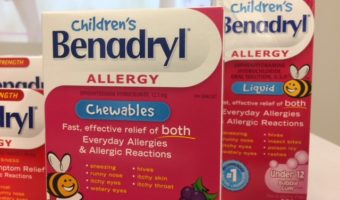But not eeve”We’ve all seen those comical commercials showing the dad buried body-deep in a sand castle when his stomach starts to churn noisly indicating a big poop is on route.
Then there’s the relaxed woman enjoying a massage at the end of long pier in Tahiti when her stomach rumbles strike.
For many of us watching these commercials, we’ve been there…that moment when it feels like someone is jabbing your intestinal track, wringing it out in their hands, and then forcing it out of you with barely a moments notice. For the rest, you’ve likely taken every precaution to avoid it.
When traveling, stomach ailments can seriously dampen the fun. Whether you’re on a work trip, family outing or a honeymoon, the last thing you want is to be stuck on the porcelain throne the whole time.
Renowned Pediatrician, Dr. Dina Kulik, gave me a breakdown of those nasty viral and bacteria infections that seem to strike us all at the worst times (for a complete breakdown of other common illnesses visit Dr. Kulik’s website)
Dr. Kulik deals with questions of this nature all the time because traveling families can get overly concerned about weight loss, dehydration and medicating while away from home. “These are valid concerns,” says Kulik, “but, generally diarrhea in babies and children does not cause ill effects, other than the annoyance of changing diapers, treating diaper rash or helping your child to the toilet.”
So what exactly constitutes diarrhea?
When traveling with infants, it can be exceptionally hard to distinguish soft stools from an actual stomach bug. According to Dr. Kulik, “diarrhea is defined as watery stools that are often more frequent than normal bowel movements.” The key is frequency. If your little one is going often and it’s wet/messy, chances are they’re not feeling 100%.
What about stomach flu?
“Most people refer to viral gastroenteritis as the ‘stomach flu’ and know it for its contagiousness. It often travels through camps, classrooms or day care centers,” describes Kulik.
- Rotavirus is one of the most common types of stomach flu although we’re seeing less and less of it as infants receive a vaccination against. It’s most commonly seen in the winter and early spring.
- Coxsackie virus is more often seen in the summer
Signs of flu in your children:
1. reduced appetite
2. fever
3. nausea
4. vomiting
5. weight loss
6. risk of dehydration
I’v been concerned about my son’s well being during a bout of the diarrhea — is he dehydrated? How can you tell?
It’s one of the first things I asked of Dr. Kulik.
“I find the best way to tell if a child has dehydration is dry mouth, less glossy eyes, lethargy and decreased voiding,” says Kulik. “See your doctor if your child has these symptoms.”
So what is it about traveling that gets our intestines tied up in knots?
There’s actually a variety of different viruses, bacteria and parasites that cause diarrhea and depending on where you are in the world, there are even different bugs that can cause it too. “No matter where you are, infectious gastroentiritis is most commonly acquired from person to person contact, contaminated food or water,” clarifies Kulik. “Infections that cause diarrhea are generally very contagious. Less than stellar hand and toilet hygiene can lead to contamination and infection of others. Someone’s hands, surfaces such as tables and changing tables, toilets and toys can all harbor the bug. As children frequently put their fingers in their mouth, it’s easy to acquire,” she states.
There are several types of bacteria that cause gastroenteritis, says Kulik:
1. Ecoli – usually through contaminated food or water such as undercooked hamburgers. Some children will get particularly ill, with the possibility of kidney damage, called Hemolytic Uremic Syndrome. Luckily, this is rare.
2. Giardia – otherwise called ‘beaver fever’, it is often caught in contaminated water supplies, in day care centers, Aquarians, lakes and swimming pools.
3. Salmonella – usually from undercooked eggs and chicken, most commonly in the summer (pasta salad anyone?).
4. Campylobacter- undercooked chicken is the culprit here
Treatment for Travelers:
Children generally only require hydration, says Kulik. “Even if your child is not eating, this is usually not a concern as long as he or she is drinking. I recommend small sips often; even five or 10 mL every 20 or 30 minutes may be okay. As long as your child does not suffer an excessive loss of fluid in the diarrhea or vomit, and takes some fluid with sugar and salt, he or she will remain hydrated. Electrolyte solution can be used, though some children are offended by the taste. Oral rehydration fluid like Gatorade, which has less salt and more sugar can help. In my home, we mix a small amount of Gatorade with Pedialyte. Small amounts of water with diluted juice may be helpful, though the juice may make diarrhea worse,” she cautions.
Others aren’t as lucky: “Some forms of bacteria gastroenteritis will require antibiotic therapy. Your doctor will suggest collecting a stool sample to send for culture. If bacteria grows in the stool your doctor may suggest antibiotics. If a parasite is present in the stool, an anti-parasitic medications may be prescribed,” advises Kulik.
Note: There are other less common causes of diarrhea such as celiac disease, thyroid conditions and inflammatory bowel disease. If your child has recurrent or frequent diarrhea, please see your doctor.



